Keeping your property one step ahead of the competition is a constant battle. You’re always looking for an edge or that little something that helps your site stand out from the rest.
But a lot of staying on top comes down to the basics. And if you follow those, you can help elevate your commercial property.
Don’t forget these 12 commonly ignored best management practices (BMPs) on your commercial landscape.
The Most Ignored Commercial Landscape Maintenance Practices
Giving Trees Mulch Beds
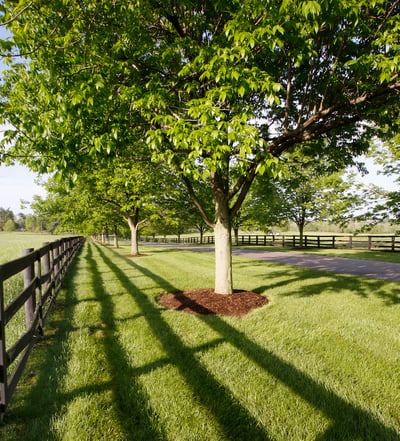 Uniform and symmetrical tree mulch beds can really liven up your commercial property, but don’t forget about some of their more practical purposes.
Uniform and symmetrical tree mulch beds can really liven up your commercial property, but don’t forget about some of their more practical purposes.
Having a large, symmetrical mulch bed around your trees helps protect the trees’ trunks from mechanical damage caused by mowers and trimmers.
Just remember, if you plant beneath a tree to use plants in those beds that thrive in the shade, since they will probably spend most of their time covered by branches.
Avoiding Mulch Volcanoes (If You Can)
We’ve all seen mounds of mulch surrounding trees that look like they are about to erupt. But, you really need to avoid that volcano look.
Mulch has its benefits — such as reducing erosion, controlling weeds, limiting soil evaporation and moderating temperatures — but you can have too much of a good thing.
You don’t want the mulch to touch the base of the tree if you can help it. (And don't assume all mulch volcanoes are 100 percent mulch. Trees planted too high above grade and trees with girdled roots appear to have mulch volcanos, but they may not.)
Mulch retains moisture, and while that’s helpful for soil, it can actually harm the tree if you have a mound of it touching the bark.
Cutting Grasses in the Spring
Ornamental grasses have the potential to enhance your commercial landscape year round and provide benefits you may not even be aware of.
Resist the urge to cut them back during the fall: Instead, trim the grasses in spring. It’s common to want to trim greenery back as the temperatures begin to drop, but grasses provide aesthetic interest such as texture and movement during the winter.
Many beneficial insects, like praying mantis, can be found in them during winter in the habitat ornamental grasses provide.
Shaping Shrubs for Sunlight
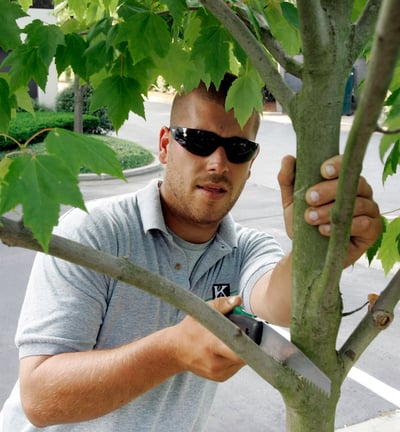 Well-trimmed hedges can add structure to your landscape, but they need to be properly pruned to give you the best results.
Well-trimmed hedges can add structure to your landscape, but they need to be properly pruned to give you the best results.
Prune your hedges in the shape of a trapezoid to allow light to penetrate to the lowest foliage. The smaller width should be on top, with a wider base — not the other way around.
Raising Your Tree’s Canopy
Unruly, low-hanging branches aren’t only an eyesore and possible hazard: They may also be against local codes.
City codes in both Lexington and Louisville dictate tree canopy heights near sidewalks, streets and parking lots. You’ll also need to raise canopies around sidewalks and parking lots as a safety measure for visitors.
Lifting the branches can make signage more visible and allow people to enjoy the shade under them, if they are near sitting areas.
Using the Right Equipment
One mistake we see all of the time is people using the wrong equipment for the task at hand. Some equipment is just better suited for certain jobs.
For example, many people fall into the trap of using a string trimmer (weed eater) to edge sidewalks and curbs. Instead, use a stick edger to keep from creating those unsightly ruts that develop during time when a string trimmer is used.
Small equipment changes can actually make a big impact on the look and health of your lawn.
Downsizing Your Mower
A vast, open green space may call for a mower with a large deck size, but that doesn’t mean you should use that same mower for every part of your property.
You’ll (unfortunately) see people try to use that big mower for smaller sections like parking lot islands. These areas don’t warrant using a large commercial mower, and using a string trimmer won’t give you as even of a cut throughout.
Instead, use a push mower for these tighter spaces. Then, you can use the string trimmer to touch up around the edges.
Changing Your Mowing Pattern
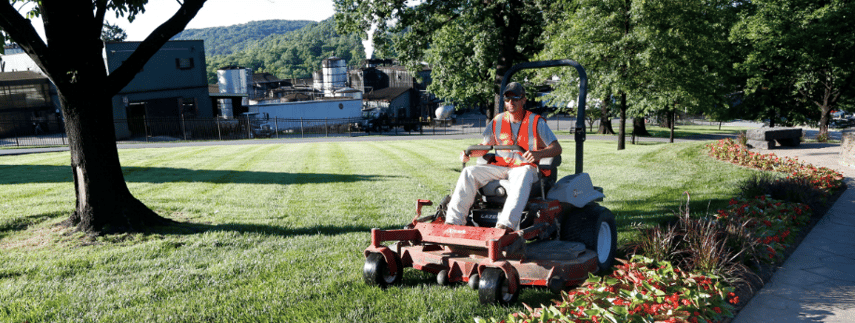
Think about walking the same path back and forth through your property’s landscape each week. Now imagine doing that with the weight of a commercial mower: It’s going to wear out your landscape (and its appeal) pretty quickly.
But, you can help fix that by alternating your mowing pattern each week. That will prevent ruts from forming, and it will also give you straighter standing turf.
Limiting Fertilization
There are plenty of benefits of applying fertilizer to your landscape, like having greener, healthier turf. But too often, we see people over applying it on their turf.
Fertilizer raises the amounts of nitrogen in your soil, and too much of it can damage or even kill your grass. Commonly referred to as fertilizer burn, having too much can cause yellow, brown or dead sections of turf. Leaving your grass clippings on the lawn will generally return one pound of nitrogen to the soil every season.
We recommend 4 pounds of nitrogen per 1,000 square feet per year for the best results.
Moving Your Annuals Closer Together
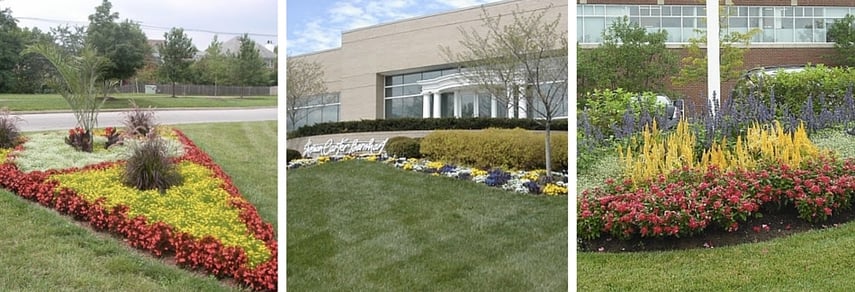
Annuals are a great way to add seasonal color to your landscape, whether they are around entrances, signage, walkways or plant beds. But spacing them out too much can take away from that wow factor. And that’s a mistake most people make.
Every annual type has a recommended spacing based on its growth habit. Don’t be afraid to plant your annuals closer together or further apart if the annual allows for it. It will help your beds look fuller and also better prevent weed growth.
Leaving Your Leaves
Whoever started the trend to bag up leaves missed out on a lot of natural benefits. To keep your property healthy and still looking pristine in the fall, just shred them up instead of collecting them. (Most commercial mowers have a mulching conversion kit to handle that.)
Mulching the leaves adds back nutrients to the soil (more nitrogen can be added to your lawn through this BMP) and help your turf green back in the spring.
Plus, shredding instead of bagging the leaves can save you money on your landscape maintenance contract.
Keeping Debris Out of the Street
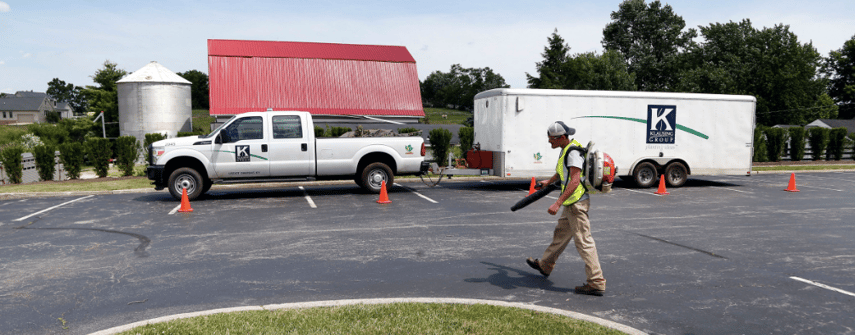
Don’t make your debris someone else’s problem by blowing it into the streets, streams or down a stormwater drain. It’s not only irresponsible, but it will also make the surrounding area less appealing and causes significant pollution problems.
Collect debris or blow everything back onto your landscape. You don’t want something to get into the waterways or drift to another property.
Be A Benefactor of These Landscape Maintenance Best Practices
Knowledge is power, so don't ignore these best grounds management practices. Hold your grounds maintenance staff or landscaper accountable, and make your commercial landscape look better and more sustainable.
Call our Lexington branch at 859-254-0762, Louisville at 502-265-0127 or fill out a simple form online to let us bring the best maintenance practices to your landscape.


